
Twice Cooked Pork (回锅肉)
April 24, 2021 Print
Anyone who’s had Sichuan cuisine would be familiar with Twice Cooked Pork or Double Cooked Pork (回锅肉) (It literally translates to twice cooked meat, but typically pork is used). This immensely popular dish is sometimes deemed the “king of Sichuan cuisine.” In my opinion, nobody can resist its aroma and full-body flavor. I’ve seen people who had sworn off fatty meat that went crazy over this delicious dish.
The name of this dish, Twice Cooked Pork (or Twice Cooked Meat), is literally derived from the way it is prepared. Pork is cooked twice: first boiled to remove any gamey taste, then stir fried with Pixian Douban and Chinese leeks to achieve its unique color and taste.
I have heard that cooking Twice Cooked Pork is the first test for aspiring chefs wanting to master Sichuan cuisine. The part that most tests a chef’s skill is the knife work. This is so because the meat needs to be sliced thinly and evenly so that, when stir fried, it curls inward to form an arch that looks like the shape of an old day oil lamp (灯盏窝). Slicing the meat too thinly results in the meat getting burned and tasting bitter. But in reality, making the meat curl requires a very specific cut of meat (二刀肉) that’s located on the ham, with the top half consisting entirely fat and bottom half entirely lean meat. Unless you can get an artisanal butcher to get it tailored to your specific cut, it is not easy to obtain this type of meat in mass markets. So the closest meat that’s available to retail grocery stores is pork belly, which has a similar overall ratio of fat to lean meat. Don’t worry if you don’t get the curl or the arch from your pork belly. It’s not meant to be. Even without the curl, this recipe will still taste fanatic!
The ingredients for Twice Cooked Pork are actually quite few in number, yet the result is so flavorful and unique. That’s one of the reasons I think this dish achieved its #1 status in Sichuan cuisine. Pretty much every Sichuan household knows how to make it and because of its wide popularity, there are many variations as well.
I got the below recipe from a long-time family friend who is from Sichuan. This friend also worked in commercial kitchen setting. According to her, Pixian Douban and Chinese leeks are the two most important ingredients that should not be changed. I’ve talked about Pixian Douban in a previous post Chili Bean Whole Fish. Like I said, Pixian Douban is essential to many famous Sichuan dishes. Chinese leeks can be tough to find outside Asia. They are actually young green shoots from growing garlic. They are tender and easy to cook, with a taste somewhere between garlic and leek. I’ve made Twice Cooked Pork with vegetables other than Chinese leeks. In my opinion, the version cooked with Chinese leeks is the most authentic and tastes the best. But it’s not the end of the world if you can’t find Chinese leeks. Many variations of Twice Cooked Pork use other vegetables instead. If you can’t find Chinese leeks, you can try using cabbage, onions, or leeks instead.
Preparation Time: 40 minutes
Total Time: 1 hour and 10 minutes
Servings: 4-6 people
Ingredients:
- 1 lb (~450g) pork belly1
- 1 1-inch long piece of ginger
- 2 green onions
- 1 tablespoon Chinese cooking wine
- 1 lb (~450g) Chinese leeks (青蒜)2
- 1 tablespoon Pixian Douban
- 1 teaspoon sweet bean sauce (甜面酱)3
- 1 teaspoon sugar
- 1 tablespoon vegetable oil

Preparation:
- Wash and cut the ginger into large slices. Slice the green onions into long pieces. Put the pork belly in a large sauce pan along with the ginger slices, onion pieces, and 1 tablespoon of Chinese cooking wine. Add enough water to fully immerse the pork belly. Set the heat to medium-high and cover the lid. When the water boils, lower the heat to medium-low and continue simmering for 10 minutes. Then take the meat out and cool it in cold water. Wash off any scum and pat it dry with a paper towel. Wrap the meat in plastic wrap and place in the freezer for 30 minutes to an hour.4





- While waiting for the pork belly to cool, prepare the other ingredients. Wash the Chinese leeks thoroughly then cut diagonally into 2 inch (5cm) long chunks. Split the white parts lengthwise. Immerse the cut Chinese leeks to remove any possible dirt residue. Add 1 tablespoon of water to the 1 teaspoon sweet bean sauce, mixing well. Prepare the other required seasonings and condiments, with their appropriate amounts, in small dishes for later use.


- Take the pork belly out of the freezer. Cut it into thin slices (ideally around 1/8 inch (~3 mm) thick and between 1.5 (~4 cm) and 2 inches (5 cm) wide).


- Heat a large wok or well-seasoned cast iron skillet under medium heat. When the wok is warm, add the 1 tablespoon of vegetable oil. Wait for 15 seconds, then add the sliced pork belly, stirring and tossing for about 5 minutes until more oil comes out of the pork belly slices.
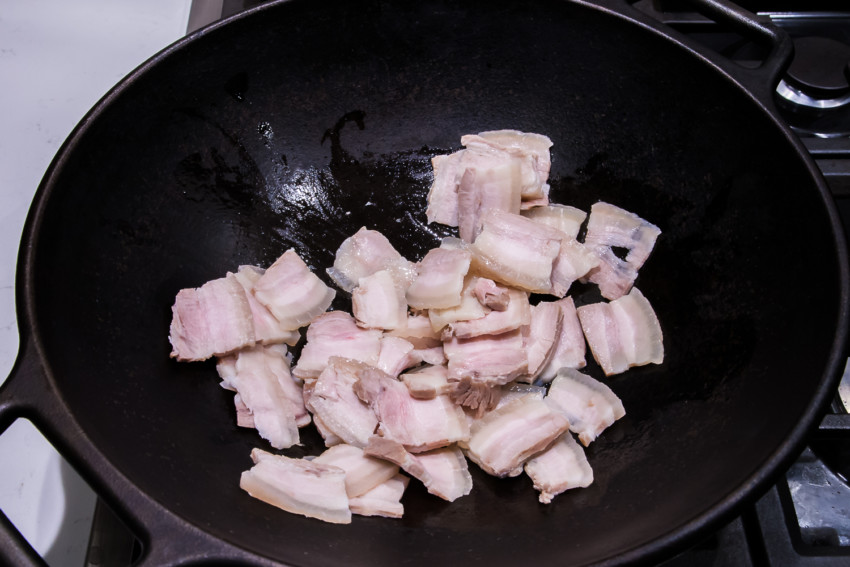

- Move the pork belly slices to the side of the wok (see picture). In the center of the wok, add the 1 tablespoon of Pixian Douban, the sweet bean sauce and water combination, and 1 teaspoon of sugar, mixing the condiments well until red oil appears. Raise the heat to medium-high or high. Toss and stir so the pork belly slices get evenly coated, about 15 seconds. Then add the chopped Chinese leeks and keep stirring for another 30 seconds. Transfer everything to a flat plate and enjoy!






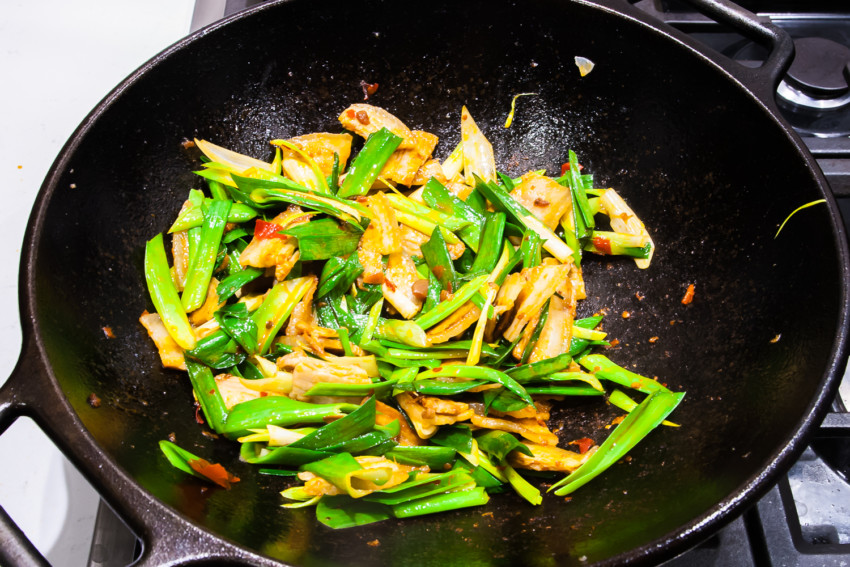
Bon Appétit

Notes:
- Ideally, try to use pork belly with skin. But if you can’t find it or dislike skin, you can use skinless pork belly instead.
- Chinese leeks look like thinner and softer versions of regular leeks. They are young green shoots from garlic. If you can’t find Chinese leeks, use cabbage, onion, or regular leeks instead. You might need to blanch cabbage and leeks first as they are tougher to cook than Chinese leeks.
- Sweet bean sauce can be found in most Asian grocery stores. Use the Sichuan style one. If you can’t find sweet bean sauce, you can substitute it with 1 teaspoon of light soy sauce and 2 teaspoons of sugar.

- Freezing the blanched pork belly slightly makes it much easier to cut into thin slices.
As an Amazon Associate I earn from qualifying purchases.



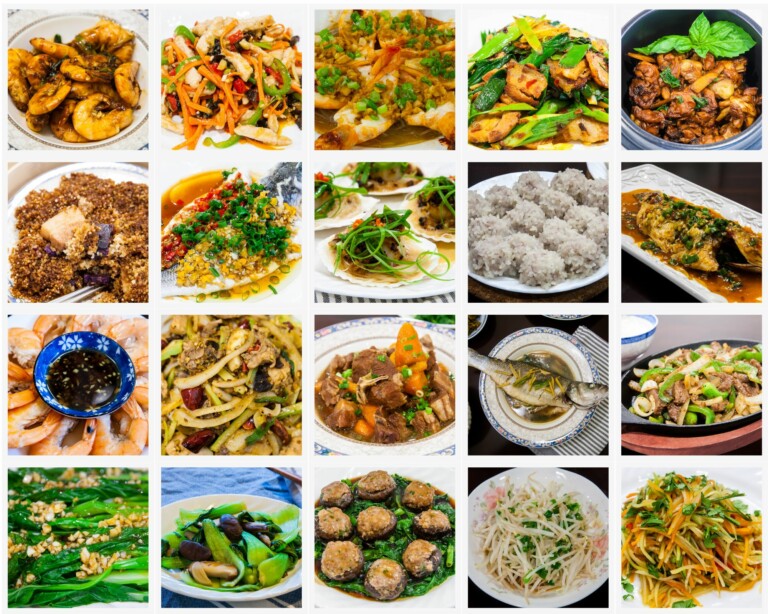

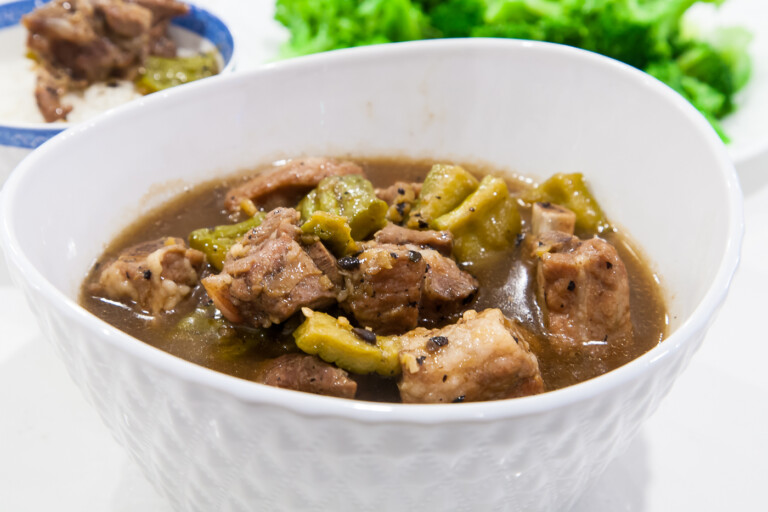


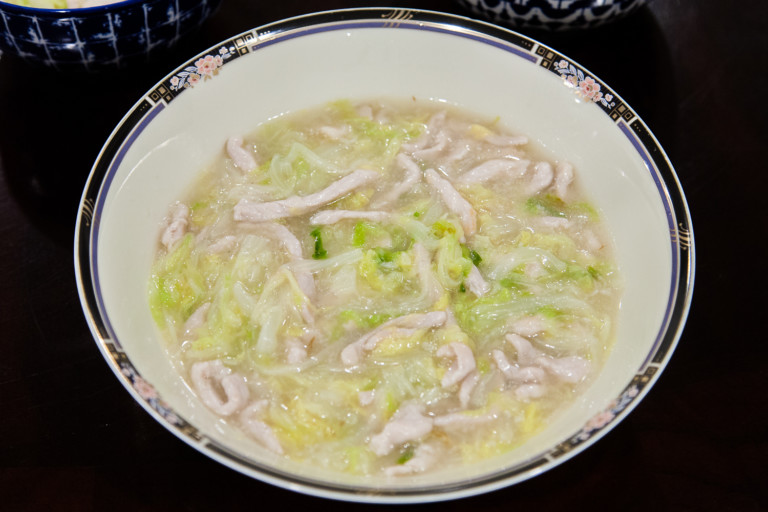











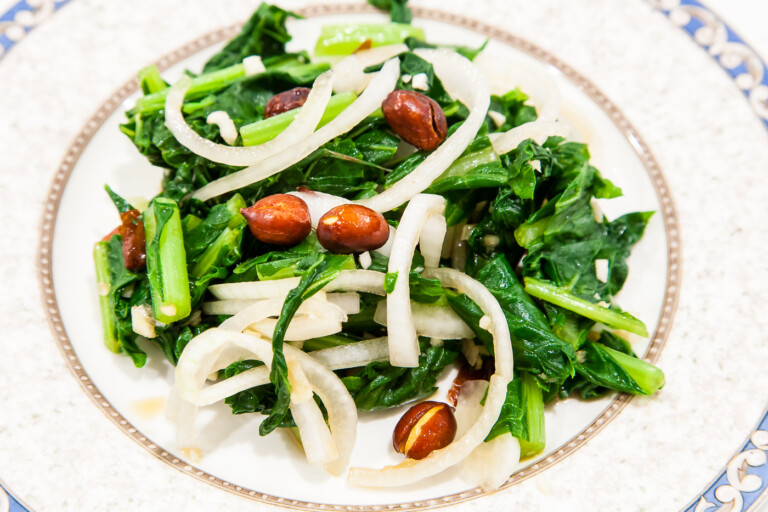


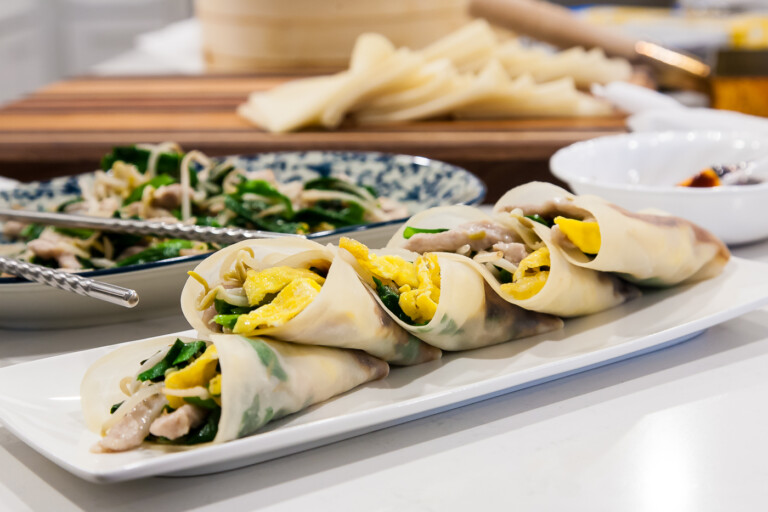



kevin wrote:
So, what you are calling ‘Chinese leek’ is actually a garlic stem. I’ve also seen the English term ‘Chinese leek’ for a different species of plant (韭菜). Your recipe here from your friend says that using the garlic stems (青蒜) is important. Funnily enough, I saw on another Chinese food blog that, it’s good to use (western) leeks (韭葱). However, I think they are not from Sichuan Province like your friend. I enjoyed the detail about the particular cut of the pork.
AsianCookingMom wrote:
Hey Kevin I really appreciate you making such detailed comment! It’s definitely true that the various leeks can be confusing, even to many Chinese. Their English translations can cause even more confusion since many of them share the same English name. I will make sure to specify the type of leek/shoot for my future recipes. For this dish, garlic stems (青蒜) are used in the most authentic or original version of twice cooked meat. But in the West, garlic stems are not easily obtained, so you can definitely use western leeks. Western leeks have a similar taste to garlic stems, but require more cooking time. So if you’re using western leeks, I recommend blanching them first. You can then add them at the end, stirfrying together with the twice cooked meat.